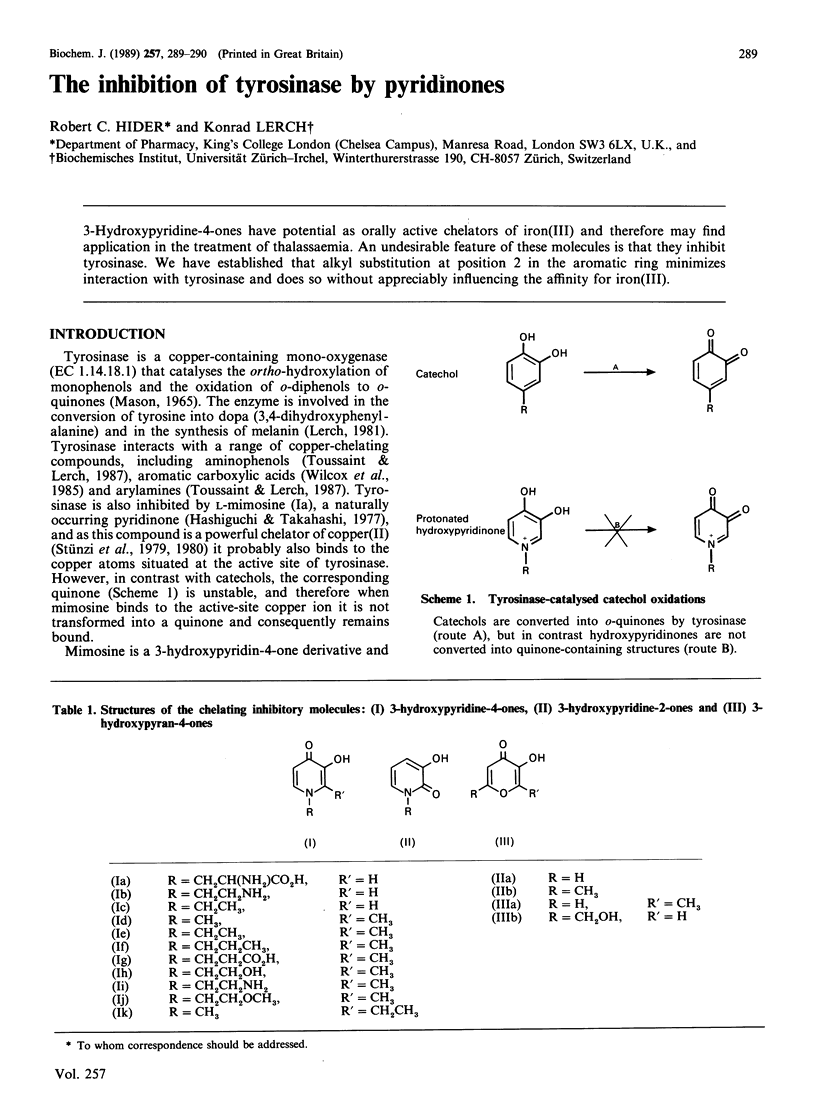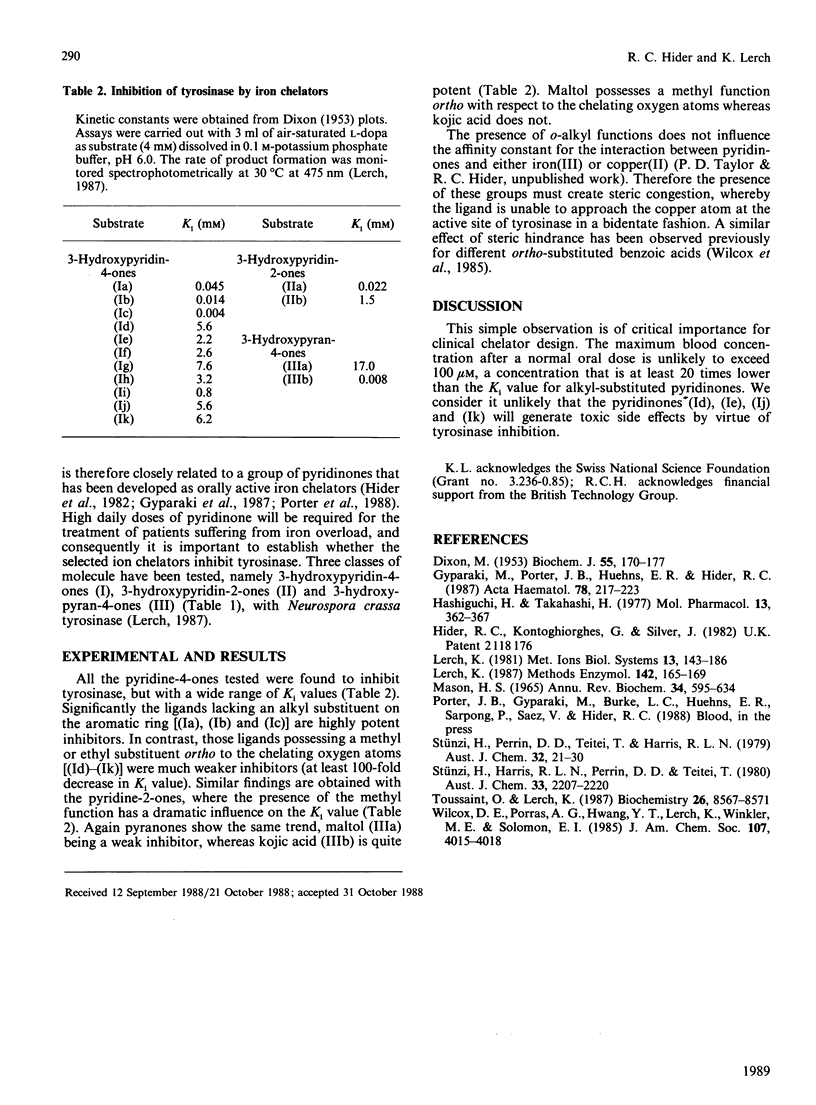Abstract
3-Hydroxypyridine-4-ones have potential as orally active chelators of iron(III) and therefore may find application in the treatment of thalassaemia. An undesirable feature of these molecules is that they inhibit tyrosinase. We have established that alkyl substitution at position 2 in the aromatic ring minimizes interaction with tyrosinase and does so without appreciably influencing the affinity for iron(III).
Full text
PDF

Selected References
These references are in PubMed. This may not be the complete list of references from this article.
- DIXON M. The determination of enzyme inhibitor constants. Biochem J. 1953 Aug;55(1):170–171. doi: 10.1042/bj0550170. [DOI] [PMC free article] [PubMed] [Google Scholar]
- Gyparaki M., Porter J. B., Hirani S., Streater M., Hider R. C., Huehns E. R. In vivo evaluation of hydroxypyridone iron chelators in a mouse model. Acta Haematol. 1987;78(2-3):217–221. doi: 10.1159/000205878. [DOI] [PubMed] [Google Scholar]
- Hashiguchi H., Takahashi H. Inhibition of two copper-containing enzymes, tyrosinase and dopamine beta-hydroxylase, by L-mimosine. Mol Pharmacol. 1977 Mar;13(2):362–367. [PubMed] [Google Scholar]
- Lerch K. Monophenol monooxygenase from Neurospora crassa. Methods Enzymol. 1987;142:165–169. doi: 10.1016/s0076-6879(87)42025-9. [DOI] [PubMed] [Google Scholar]
- MASON H. S. OXIDASES. Annu Rev Biochem. 1965;34:595–634. doi: 10.1146/annurev.bi.34.070165.003115. [DOI] [PubMed] [Google Scholar]
- Toussaint O., Lerch K. Catalytic oxidation of 2-aminophenols and ortho hydroxylation of aromatic amines by tyrosinase. Biochemistry. 1987 Dec 29;26(26):8567–8571. doi: 10.1021/bi00400a011. [DOI] [PubMed] [Google Scholar]


